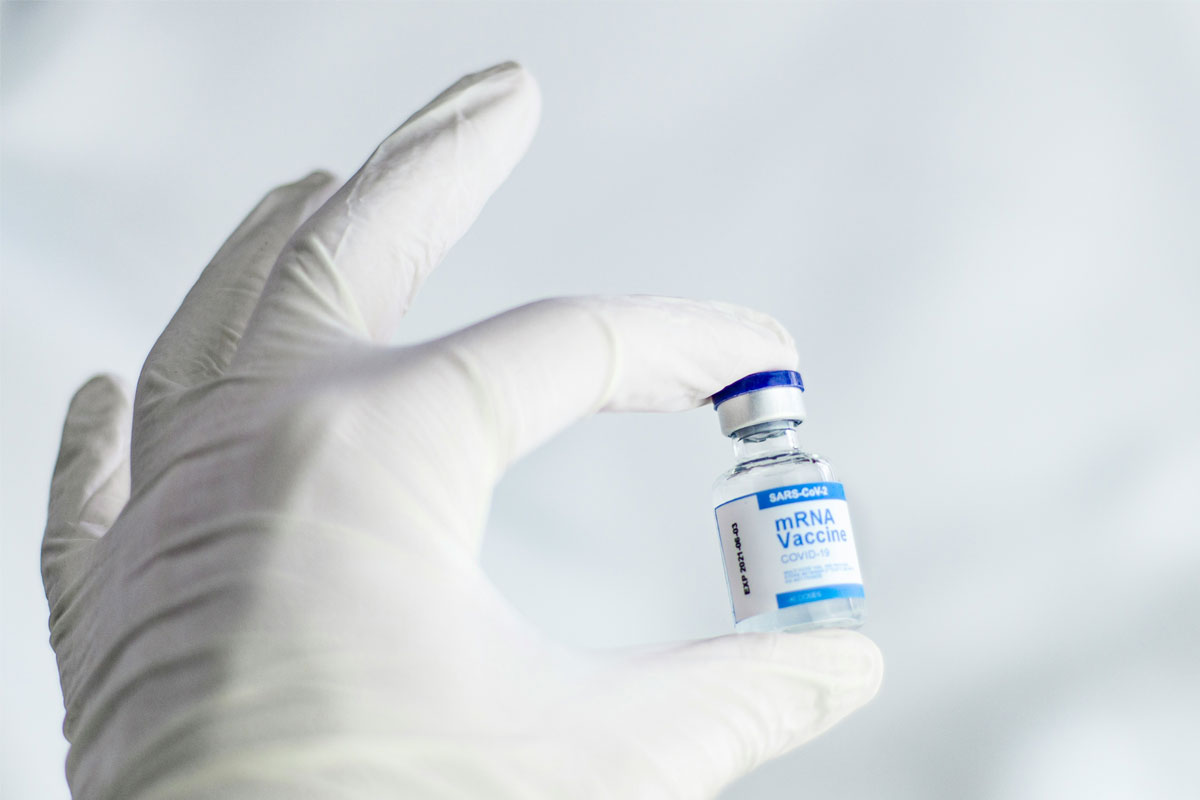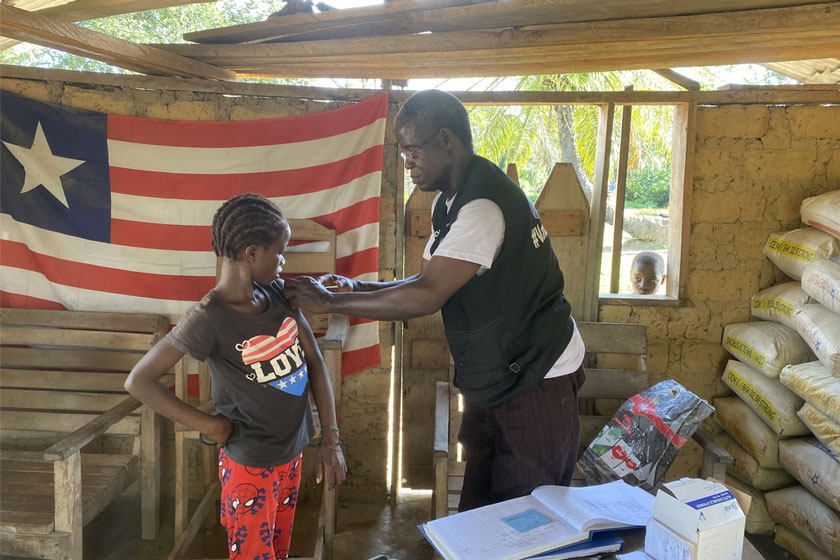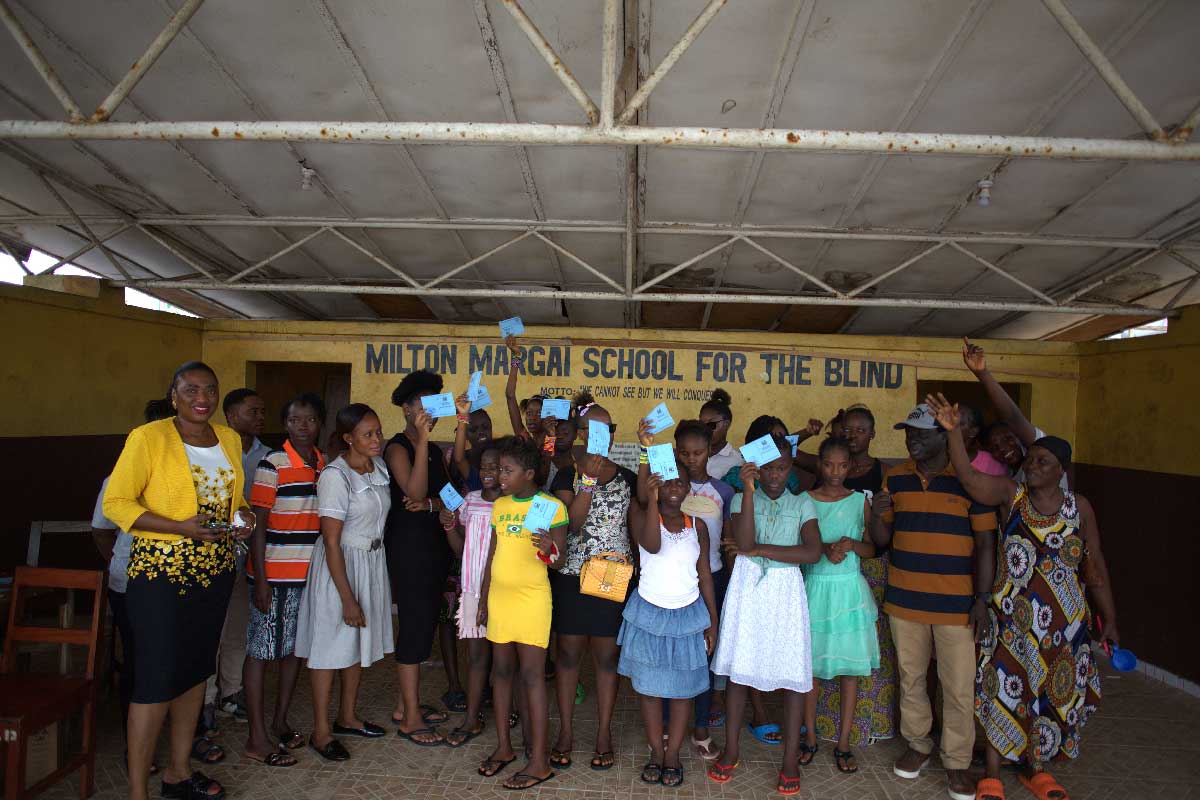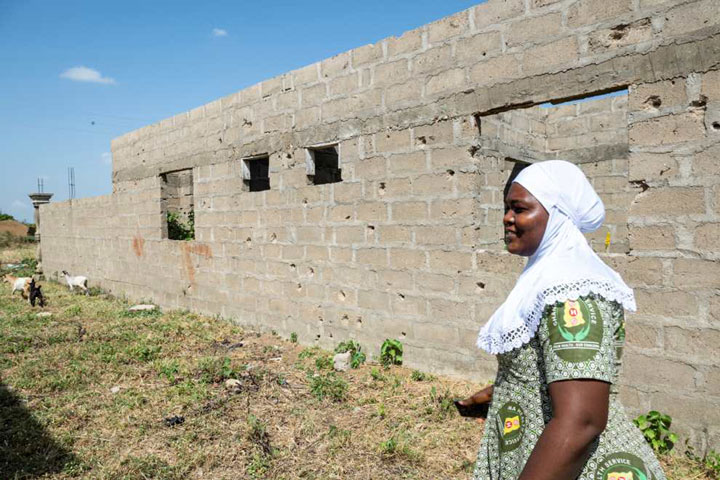Winning against measles: five charts that tell a remarkable 24-year story
A new report shows remarkable gains against measles since 2000, yet significant challenges persist.
- 28 November 2025
- 5 min read
- by Linda Geddes

A World Health Organization (WHO) report sets out how far the world has come in tackling measles over the past 24 years.
During that time, Gavi, the Vaccine Alliance, has helped to put measles vaccines within the reach of hundreds of millions of children, helping lower-income countries to build and strengthen routine immunisation, run preventive campaigns and quash outbreaks.
Yet the disease hasn’t gone away. Global coverage with measles vaccines still falls short of the 95% needed to halt transmission and outbreaks continue to flare – not only in the lowest-income settings, but also in wealthier countries where immunity has frayed.
The data shows elimination of measles is possible, but only if coverage gaps are closed everywhere.
Here, we chart the trajectory of measles in the first quarter of the 21st century – and the challenges that remain.
Global measles deaths have fallen dramatically since 2000

Since 2000, global measles cases have fallen by 71% – from an estimated 38 million to 11 million in 2024 – thanks largely to improved vaccination coverage.
Deaths have dropped even more steeply. In 2000, measles claimed around 777,000 lives globally; by 2024, that figure had fallen to 95,000, the lowest annual estimate in decades.
In total, measles vaccination is estimated to have prevented nearly 58.7 million deaths globally over this 24-year period, cementing it as one of the most successful public-health interventions in history. And the benefits extend well beyond health: every dollar invested in measles vaccination returns an estimated US$ 58 in economic value.
Measles vaccine coverage continues to climb
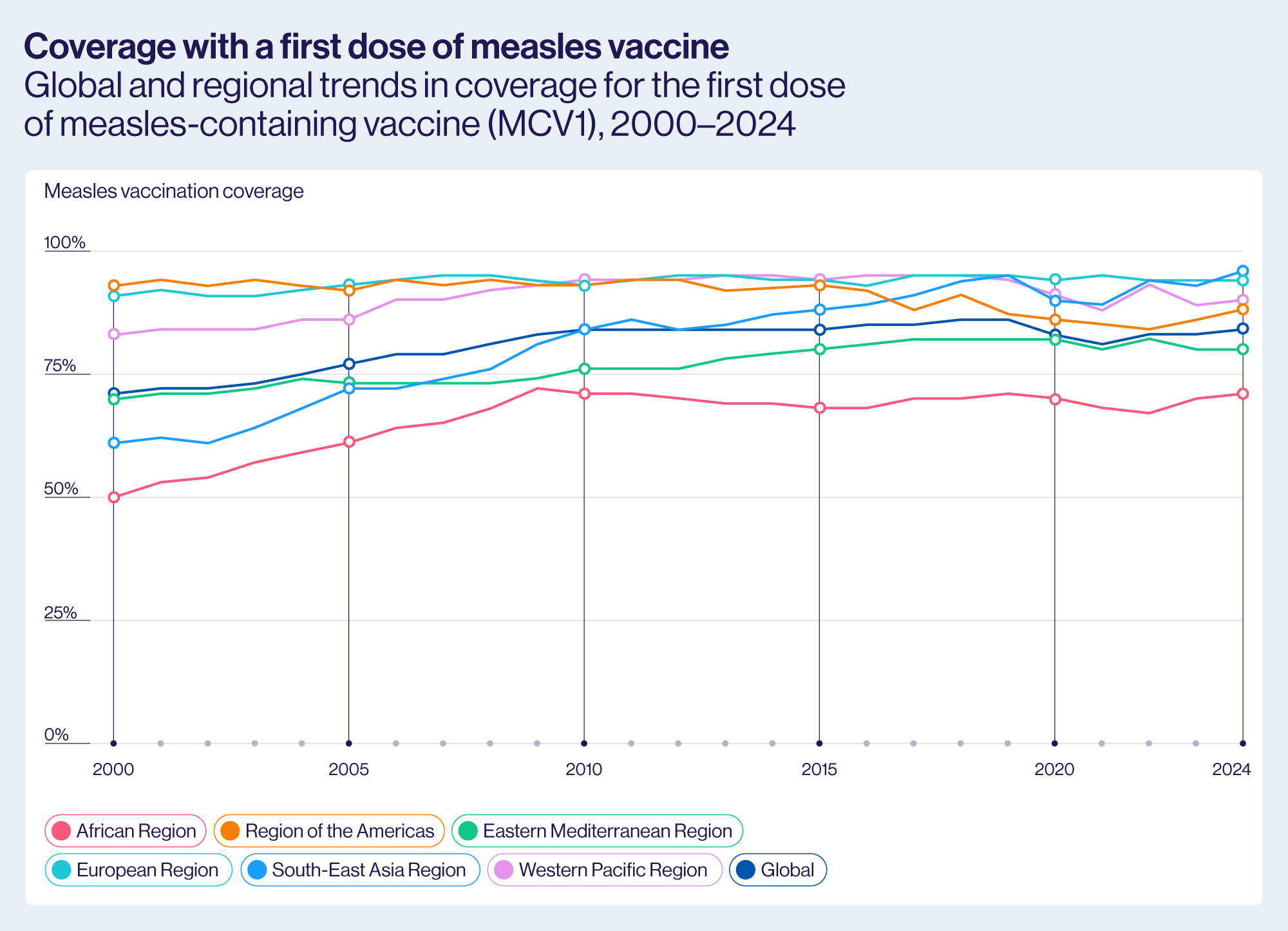
Coverage with the first dose of measles-containing vaccine (MCV1) currently stands at 84% (up from 83% in 2023 and 71% in 2000), though it has yet to recover to the pre-pandemic levels of 86%.
One dose of the vaccine provides a high level of protection against measles, but because a small number of individuals don’t fully respond to this first dose, two doses are recommended to protect every child against this highly contagious virus.
Gavi and its partners have been working hard to boost measles vaccination following declines driven by the COVID-19 pandemic.
“Gavi works with Ministries of Health, WHO, UNICEF, local leaders, healthcare providers and civil society organisations as part of a broader Alliance to support countries to increase measles vaccination coverage, address gaps in routine immunisation services, and build community engagement and demand for vaccines,” said Rebecca Casey, Head of the Measles Vaccine Programme at Gavi.
Coverage for the all-important second dose of measles vaccine has also rocketed
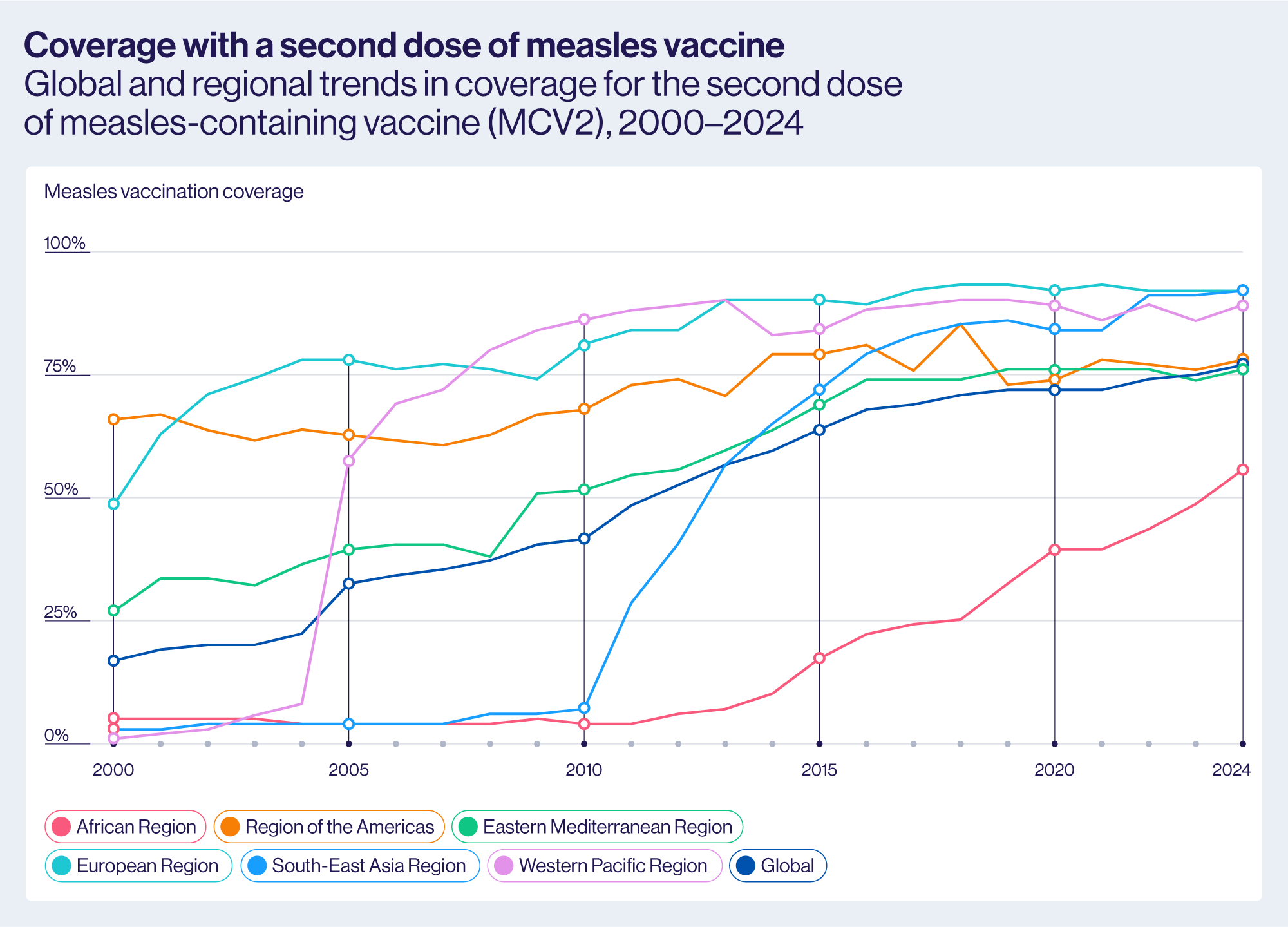
With a second dose of measles vaccine, 97% of people develop immunity. This makes it a crucial part of stopping transmission and reaching population immunity.
Since 2000, coverage with this second dose has risen markedly – from 17% at the turn of the century to 76% in 2024, up from 74% the year before.
Much of this progress reflects the steady expansion of national immunisation programmes, with more countries adding a routine second dose and reaching children who might otherwise remain vulnerable.
“Since 2000, the number of Gavi-supported countries that have introduced a second dose of measles-containing vaccine into their routine immunisation schedule has increased from 5 to 56; with only one Gavi-supported country left to introduce this critical second measles vaccine dose,” said Casey.
“In addition, Gavi supports countries to implement critical time-sensitive preventive vaccination campaigns to close population immunity gaps by reaching un-and under-immunised children with this lifesaving vaccine, including in the most complex contexts and under-served communities.”
Measles vaccine progress in Africa has been particularly striking
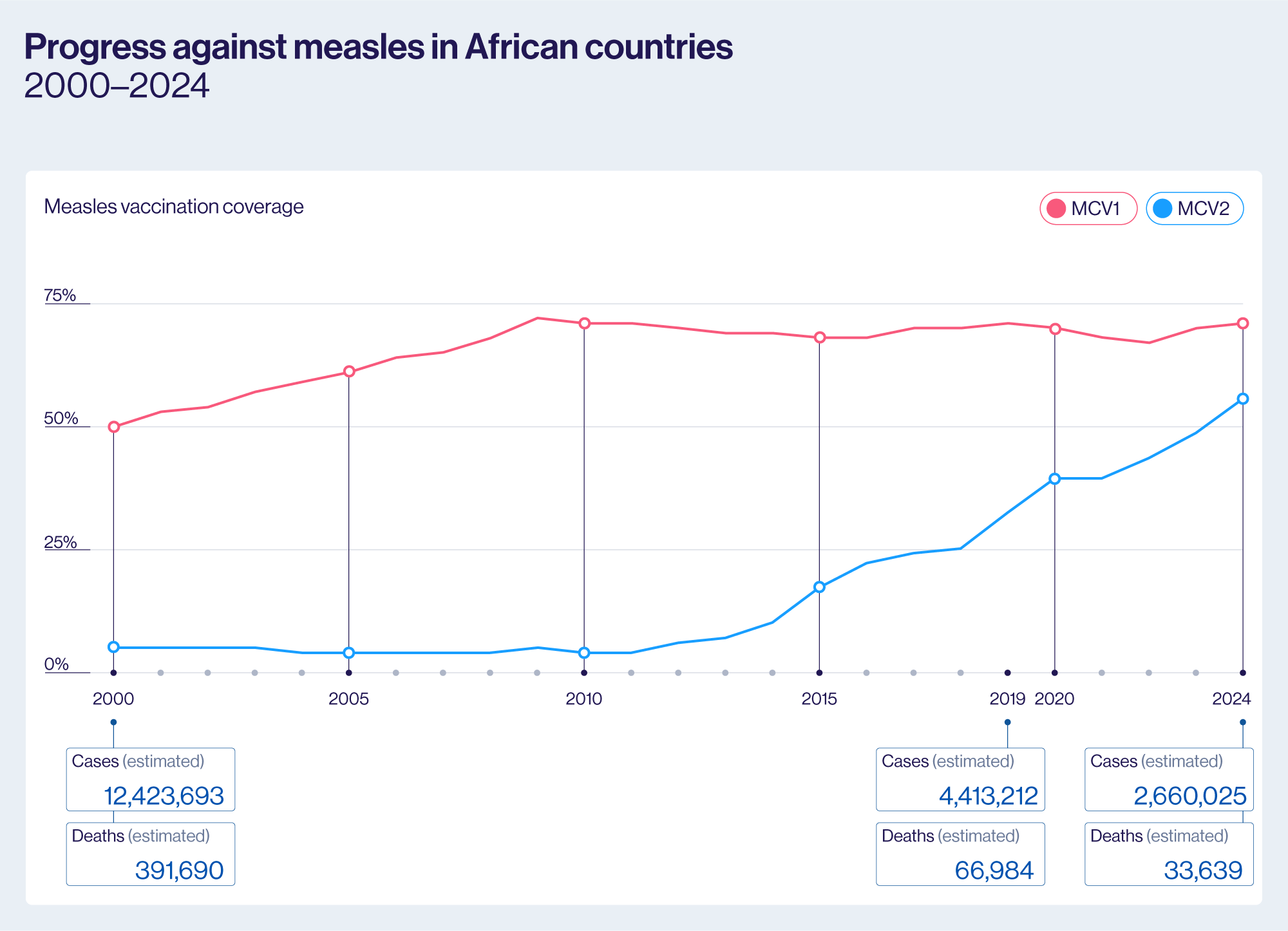
Across Africa, in particular, countries have shown striking resilience and progress.
Strengthened routine immunisation efforts and wide-reaching catch-up campaigns have helped countries reach children who might otherwise have been missed.
Even in the face of competing health priorities, tight budgets and rapidly growing birth cohorts, first-dose measles coverage has climbed steadily over the past 25 years – rising from 50% in 2000 to 71% in 2024. This takes it back to where coverage stood before COVID-19 disrupted services.
Coverage with a second dose follows a similar upwards trajectory. From a starting point of just 5% at the turn of the century, it reached 39% by 2019 and 55% in 2024.
Over that same period, the region recorded a 40% fall in measles cases and a 50% drop in deaths – a reminder that sustained investment in vaccination continues to shift the trajectory of the disease.
2024 was among the worst years for measles outbreaks since 2003
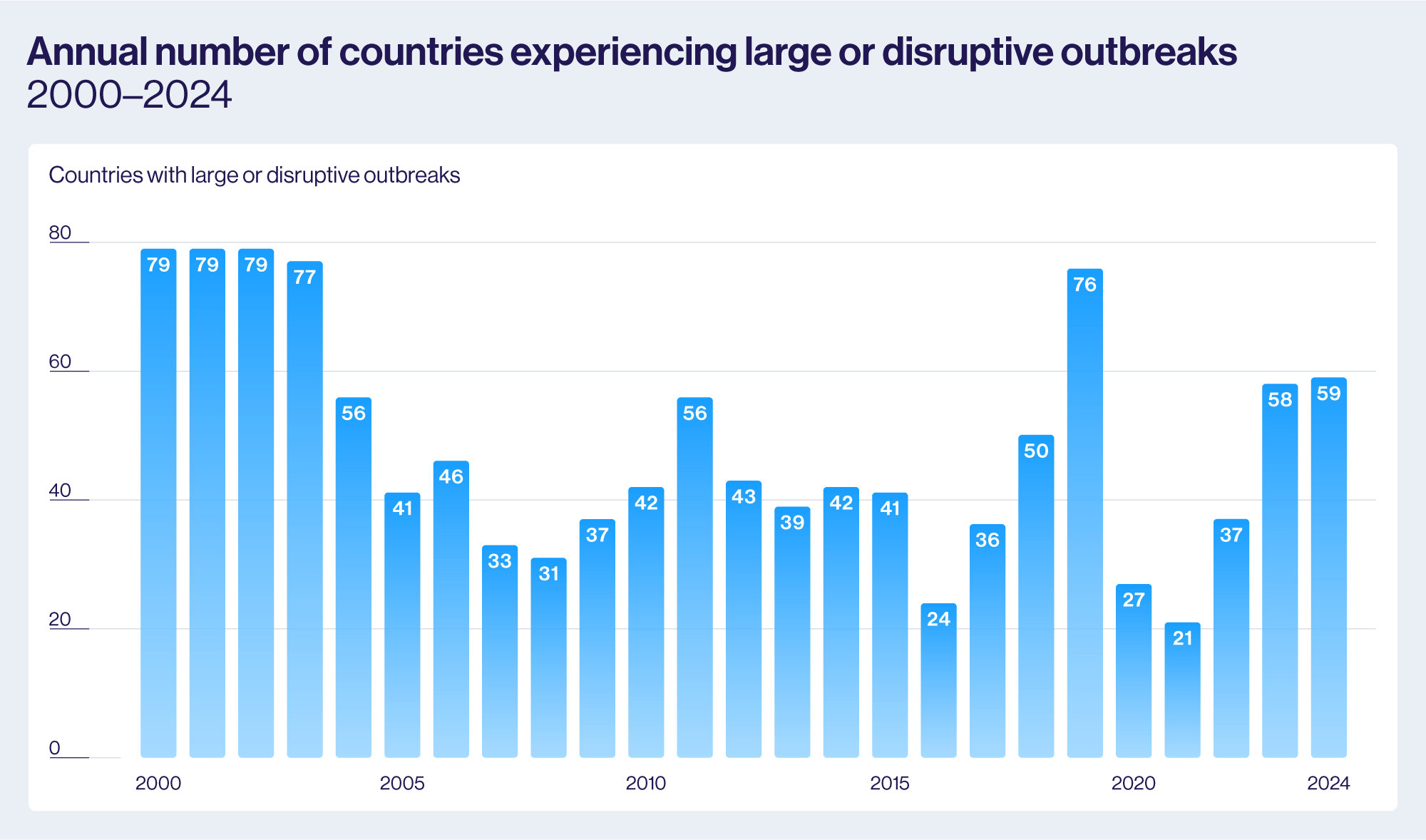
The increasingly frequent flare-ups of measles – not only in low-income countries, but in high- and middle-income nations too – is a stark reminder of the need to address immunity gaps everywhere.
In 2024 alone, 20.6 million children missed their first measles dose, more than half of them in Africa. These gaps have helped fuel a global resurgence of measles: 59 countries experienced large or disruptive outbreaks last year, among the highest numbers seen since 2003.
“The rise in outbreaks in regions around the world is a clear warning sign that we must not be complacent in our efforts to reach and maintain the high coverage rates needed to prevent outbreaks and deaths,” said Casey.
“Every child deserves protection from measles, and it is often the most vulnerable who are at greatest risk.”
